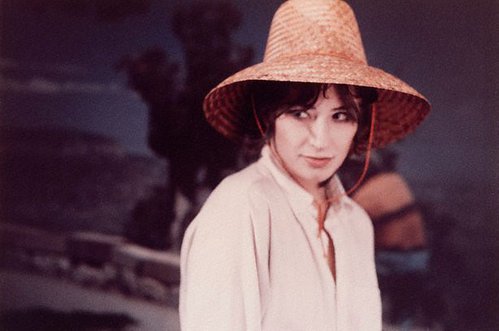-
Details
- Other Titles
- Untitled film still 1979
MP#35 - Date
- 1979
- Media category
- Photograph
- Materials used
- gelatin silver photograph
- Edition
- 2/10
- Dimensions
- 23.3 x 16.2 cm image; 25.3 x 20.3 cm sheet
- Signature & date
Signed c. verso, ink "Cindy Sherman". Not dated.
- Credit
- Mervyn Horton Bequest Fund 1986
- Location
- Not on display
- Accession number
- 369.1986
- Copyright
- © Courtesy Cindy Sherman and Metro Pictures
- Artist information
-
Cindy Sherman
Works in the collection
- Share
-
-
About
Cindy Sherman’s series ‘Untitled film stills’ took place over a five-year period beginning in 1977 when she was 23 years old. In small black-and-white photographs, she impersonated various female character types from old B-grade movies and film noir. As both performer and director, Sherman investigated the diverse ways in which glamorous mass-mediated images socialise us or discipline us, fool us or placate us. In her single-frame movies she showed moments when desire and reality, personal and collective memory, are merged. Carefully selecting costume, wig, make-up and props, as in ‘Untitled film still #35’, Sherman mobilises a set of informational cues for triggering a daydream or reverie. With clever framing, lighting and composition, the movie fiction of a character is shown in vulnerable solitude. And we get a sense that the character is being watched, that she is the object of someone’s gaze. Since Sherman’s characters are not specified – they seem blank, vacant or absent-minded – we are free to construct our own narratives for these women.
Sherman’s later ‘Untitled film stills’ were in colour and employed rear-screen projection. The change suggested a move to the 1960s and 70s rather than the 1950s, evoking TV rather than the big screen. In this colour series the women seem less like victims or ‘femmes fatales’, more confident and independent. This was followed by a series of what appeared to be centrefolds. By copying mass-mediated modes and genres she subverts them, reversing male and female subject positions, and leaving us unsettled by the ambivalence.
In subsequent work, while exploring the strange and surreal world of fairytales, Sherman herself appears more doll-like. Using prostheses and plastic props beasts become hybrid human-doll creatures hidden among abject detritus. The piecemeal body (recalling surrealist Hans Bellmer’s ‘La demie poupée’- AGNSW collection) reveals a fundamental aspect of our selves: our erotic imagination driven by the unconscious. It is as though the repressed and mistreated body has come back to haunt our surface selves obsessed as we are with mannequin perfection.
© Art Gallery of New South Wales Contemporary Collection Handbook, 2006
-
Exhibition history
Shown in 6 exhibitions
Acquisitions from the Komon, Salkauskas and Horton Funds, Art Gallery of New South Wales, Sydney, 05 May 1987–31 May 1987
International works from the permanent collection, Art Gallery of New South Wales, Sydney, 12 Jan 1991–14 May 1991
Great gifts, great patrons, Art Gallery of New South Wales, Sydney, 17 Aug 1994–19 Oct 1994
Read my Lips, National Gallery of Australia, Canberra, 06 Jun 1998–09 Aug 1998
American Beauty: from Muybridge to Goldin, Art Gallery of New South Wales, Sydney, 05 Jun 2003–27 Jul 2003
Pop to popism, Art Gallery of New South Wales, Sydney, 01 Nov 2014–01 Mar 2015
-
Bibliography
Referenced in 6 publications
-
George Alexander, Contemporary: Art Gallery of New South Wales Contemporary Collection, 'Popism and screen culture', pg.204-245, Sydney, 2006, 240 (illus.).
-
Judy Annear, American beauty: from Muybridge to Goldin, Sydney, 2003, (illus.). no catalogue numbers
-
Art Gallery of New South Wales, Great gifts, great patrons: an exhibition celebrating private patronage of the Gallery, Sydney, 1994. no catalogue numbers
-
Rosalyn Deutsche, Evictions: art and spatial politics, 'Boys Town', p203-244, Massachusetts, 1996, 235 (illus.).
-
Pauline Green (Editor), Read My Lips, Parkes, 1998, 38 (illus.), 54. fig.no. 24
-
Anneke Jaspers, Pop to popism, 'Art of the second degree: post pop and popism', pg.235-279, Sydney, 2014, 237, 254, 255 (illus.).
-




